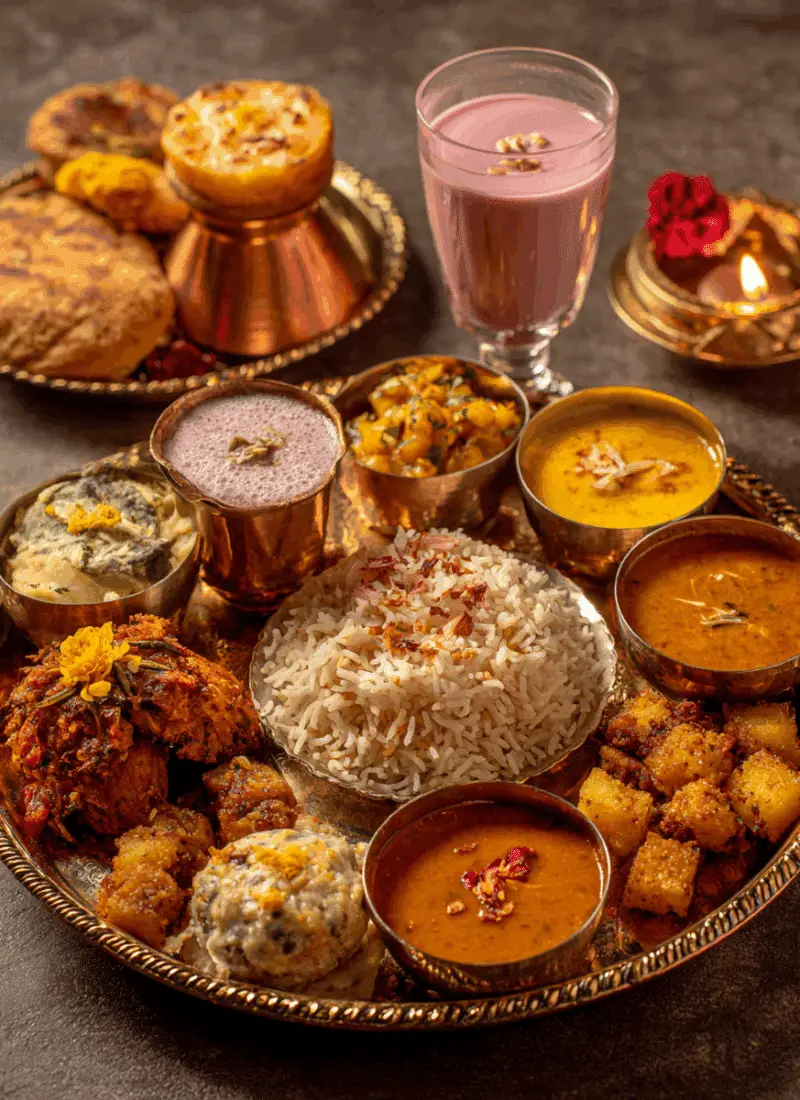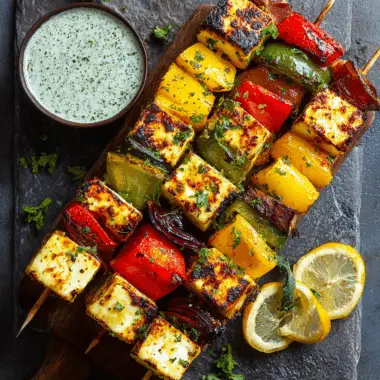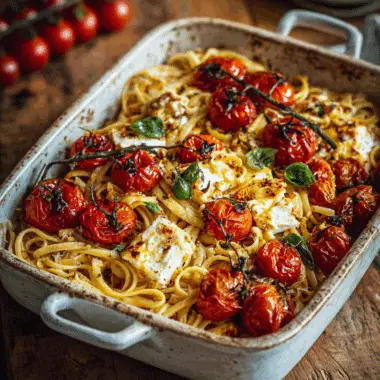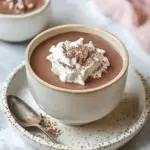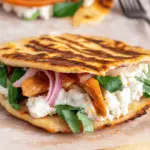The Traditional Rakhi Thali Platter is a symbolic and heartfelt meal, curated specially for the Raksha Bandhan celebration. This festive thali is more than just a combination of dishes—it is a tribute to the cherished bond between siblings. The platter typically includes a harmonious assortment of flavors and textures, such as fragrant jeera rice, creamy dal makhani, crispy puris, mildly spiced aloo sabzi, refreshing cucumber raita, a sweet treat like gulab jamun, and a beverage like rose milk.
FULL RECIPE
Ingredients
1.For Jeera Rice:
- 1 cup basmati rice
- 2 cups water
- 1 tbsp ghee
- 1 tsp cumin seeds
- Salt to taste
2.For Dal Makhani:
- 1/2 cup whole urad dal (black gram)
- 2 tbsp rajma (kidney beans)
- 1 tbsp butter
- 1 tbsp oil
- 1/2 cup chopped onions
- 1 cup chopped tomatoes
- 1 tbsp ginger-garlic paste
- 1/2 tsp turmeric powder
- 1 tsp red chili powder
- 1 tsp garam masala
- 1/4 cup fresh cream
- Salt to taste
3.For Puri:
- 2 cups whole wheat flour
- 1/2 tsp salt
- 3/4 cup water (as needed)
- Oil for deep frying
4.For Aloo Sabzi:
- 3 medium potatoes, boiled and cubed
- 1 tbsp oil
- 1/2 tsp mustard seeds
- 1/2 tsp turmeric powder
- 1/2 tsp red chili powder
- 1 tsp cumin powder
- Salt to taste
- Fresh coriander leaves, chopped
5.For Cucumber Raita:
- 1 cup plain yogurt
- 1/2 cup grated cucumber
- Salt to taste
- 1/4 tsp roasted cumin powder
- A pinch of black salt
6.For Gulab Jamun (store-bought or homemade):
- 6–8 gulab jamuns
7.For Rose Milk:
- 2 cups chilled milk
- 2 tbsp rose syrup
- Sugar to taste
- Ice cubes (optional)
Directions
- Prepare Jeera Rice:
Wash and soak the basmati rice for 20 minutes. In a saucepan, heat ghee, add cumin seeds, and let them splutter. Add soaked rice and stir gently. Add water and salt. Bring to a boil, then simmer on low heat with the lid on until rice is fluffy and cooked through. Set aside. - Make Dal Makhani:
Soak urad dal and rajma overnight. Pressure cook with enough water until soft (3–4 whistles). In a pan, heat oil and butter. Sauté onions until golden, add ginger-garlic paste, and cook for 2 minutes. Stir in tomatoes and spices. Cook until oil separates. Add cooked dal and rajma. Simmer for 20–25 minutes, mashing slightly. Stir in cream and simmer for another 5 minutes. - Fry Puris:
Knead a stiff dough using whole wheat flour, salt, and water. Divide into small balls and roll into small discs. Heat oil in a deep pan and fry puris one by one until puffed and golden. Drain excess oil on paper towels. - Cook Aloo Sabzi:
Heat oil in a pan. Add mustard seeds. Once they splutter, add turmeric, red chili, and cumin powder. Add cubed boiled potatoes and salt. Toss well to coat the spices. Cook for 5–7 minutes, garnish with chopped coriander. - Mix Cucumber Raita:
Whisk yogurt until smooth. Add grated cucumber, salt, cumin powder, and black salt. Mix well and chill before serving. - Serve Gulab Jamuns:
Warm gulab jamuns slightly if desired or serve chilled in syrup as per preference. - Prepare Rose Milk:
Mix chilled milk with rose syrup and sugar. Stir well until fully combined. Serve cold over ice cubes if preferred. - Assemble the Thali:
On a festive plate or thali, arrange a small bowl each of dal makhani, raita, and aloo sabzi. Place jeera rice, 2–3 puris, gulab jamun, and a glass of rose milk. Optionally, garnish with a sprig of coriander and a small diya or flower for traditional touch.
Nutrition Facts
- Calories: 720–850 kcal (depending on gulab jamun portion)
- Carbohydrates: 95–110 g
- Protein: 20–25 g
- Fat: 30–38 g
- Saturated Fat: 12–15 g
- Fiber: 8–10 g
- Sugar: 18–25 g
- Sodium: 600–750 mg
- Calcium: 250–300 mg
- Iron: 4–6 mg
Nutritional Balance of the Platter
Despite its festive indulgence, the Rakhi Thali Platter is a nutritionally well-rounded meal. The dal makhani provides plant-based protein and fiber, while jeera rice and puri offer a mix of complex and simple carbohydrates for energy. The cucumber raita contributes to hydration and digestion through probiotics and water content. Potatoes in the aloo sabzi give essential vitamins and minerals like potassium and vitamin C. The balance of spices and dairy ensures a wholesome experience without overwhelming the body, making it both celebratory and sustaining.
Health Benefits of Key Ingredients
Many ingredients used in this platter offer significant health benefits. Cumin in jeera rice aids in digestion and has anti-inflammatory properties. Black gram in dal makhani is high in protein and supports heart health. Yogurt in raita provides calcium and supports gut flora. Potatoes, when not deep-fried, are a good source of resistant starch, aiding digestion. Even sweets like gulab jamun, when enjoyed in moderation, can elevate mood through quick-release sugars, while rose milk offers a cooling, hydrating effect perfect for warm climates.
Flavor and Texture Variety
One of the most compelling aspects of the Rakhi Thali is the wide variety of textures and flavors it presents. The soft, buttery dal contrasts beautifully with the fluffy, aromatic jeera rice. Crispy puris add a delightful crunch, while the creamy cucumber raita offers a cool counterbalance to the spicy aloo sabzi. The sweetness of gulab jamun and the floral freshness of rose milk round off the meal with elegance. This diversity keeps the palate engaged and transforms a single meal into a rich sensory experience.
Common Variations and Regional Twists
The Rakhi Thali Platter can differ significantly based on regional preferences. In North India, paneer dishes or kheer might replace dal or gulab jamun. In the West, dishes like shrikhand and thepla could be included. In South Indian traditions, you might find lemon rice, sambhar, and coconut-based sweets. Some families may include boondi raita, mixed vegetable curry, or even sweetened rice puddings. These adaptations honor local customs while maintaining the emotional core of the Raksha Bandhan celebration.
Serving Tips for a Festive Presentation
Presentation plays a vital role in enhancing the experience of the Rakhi Thali Platter. Use a traditional steel or brass thali for an authentic touch. Arrange dishes symmetrically, using small katoris (bowls) for wet items like dal and raita. Garnish with coriander, sliced green chilies, or lemon wedges for color and freshness. Adding a diya or fresh flower enhances the ceremonial appeal. Rose petals or edible silver foil on sweets like gulab jamun can elevate the visual aesthetics further.
Ideal Pairings for the Platter
To enhance the festive meal, certain pairings can complement the thali well. Serve fresh fruit chaat or a light salad as a starter to stimulate the appetite. Chaas (spiced buttermilk) or lassi can be served alongside rose milk for those who prefer traditional drinks with probiotic benefits. Pickles and papad add an extra punch of flavor and crunch. For dessert variety, consider adding rasgulla or besan ladoo. The entire experience becomes richer with the interplay of savory, sweet, tangy, and spicy elements.
Make-Ahead and Storage Suggestions
Preparing elements of the Rakhi Thali Platter in advance can save time and reduce stress. Dal makhani and aloo sabzi taste even better the next day as flavors deepen, so they can be made ahead and stored in airtight containers in the refrigerator. Dough for puris can be prepared in advance and stored wrapped in cling film. Raita should be made fresh but ingredients like grated cucumber can be prepped earlier. Gulab jamuns, if homemade, can be stored in syrup for up to a week. Rose milk is best made fresh, but the syrup can be premixed and chilled.
Tips for Making it Healthier
Health-conscious individuals can tweak the Rakhi Thali for a lighter version. Replace puris with phulkas or baked flatbreads. Use low-fat cream or yogurt in dal and raita. Reduce oil in aloo sabzi by opting for steaming or air-frying potatoes. Use brown rice or millet-based grains in place of white rice for added fiber. Choose baked gulab jamuns or fruit-based desserts like date laddoos. Rose milk can be prepared with plant-based milk like almond or oat milk for lactose-free alternatives.
Kid-Friendly Customizations
For younger family members, the Rakhi Thali can be customized with milder spices and fun shapes. Use cookie cutters to create star or heart-shaped puris. Serve dal and rice mixed together for a comforting khichdi-like texture. Include mini samosas or paneer cubes instead of spicy sabzi. Serve a fruit custard or chocolate-based dessert for the sweet element. Offering rose milk with a colorful straw or in a mason jar can also make the meal more exciting for kids while keeping the festive spirit alive.
Conclusion
The Traditional Rakhi Thali Platter is much more than just a meal—it’s a heartfelt tribute to the enduring bond between siblings. From its cultural roots and health benefits to its customizable components and aesthetic appeal, the platter embodies warmth, unity, and festivity.

